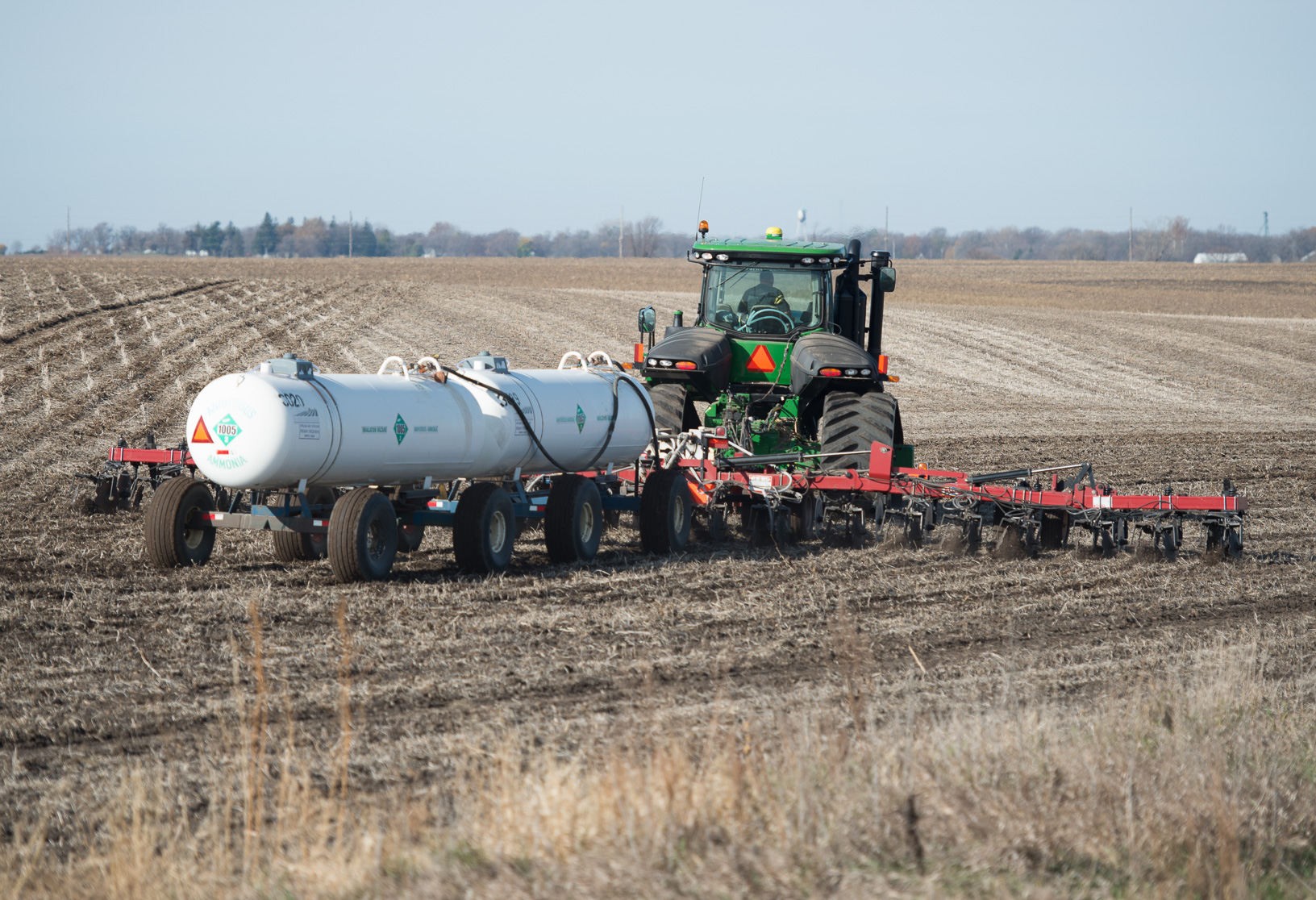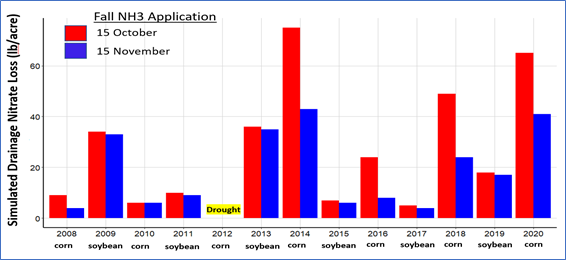
There has been evidence that small losses, due to Oct. 15 NH3 applications occur in the fall after the soybean harvest, not just in the spring when corn is planted. (Photo: Iowa Soybean Association)
Gambling with earlier fall NH3 applications
October 28, 2021 | Kriss Nelson
This is the second part in a series of assessing risks associated with applying anhydrous ammonia applications too early in the fall.
As a follow up to the previous story featured in last week’s Iowa Soybean Association’s weekly e-newsletter, a farmer was curious about specific estimates of nitrogen loss on his farm if he chooses to apply anhydrous ammonia (NH3) on Oct. 15 instead of usual applications around Nov. 15.
Fortunately, to help make these estimates, as part of a modeling study funded by the Iowa Department of Agriculture and Land Stewardship, jointly with Iowa State University, ISA collected water, soil and plant samples from side-by-side plots with different management scenarios on the farmer’s field. The collection of data occurred from 2015 to 2019.
This data was used to calibrate a crop systems model that allows testing of different management scenarios and their impact on nitrogen loss for historical data from 2008 to 2020.
“We can now use this model to play after the fact, in hindsight, computer games for that field,” says Peter Kyveryga, senior research scientist and director of analytics at the Iowa Soybean Association.
This model is allowing to accurately predict nitrogen loss on the farmer’s field for the last 12 years.

Using the data as a guide to simulate drainage tile nitrogen loss for the 12 crop growing seasons from 2008 to 2020, the Oct. 15, NH3 applications would result in significantly larger (from 15 to 30 pounds of N an acre) loss than the Nov. 15 applications in four out of seven corn growing seasons.
For example, in 2014, Oct.15 applications would cause about 30 pounds an acre more nitrogen loss, and in 2018 about 20 pounds an acre more than a Nov. 15 application.
Fertilization timing is a major contributor to this loss, though it’s noted that not all this nitrogen is from applied anhydrous ammonia.
How do we know that the model is accurate?
“The first reality check is that we correctly predicted no loss in 2012, the extremely dry year,” says Kyveryga. “Of course, the following years, 2013 and 2014 had the relative largest losses in corn and soybean. It seems that the loss was much larger in the later period, between 2015 and 2020 than before 2015, where more rainfall occurred in early spring rather than in early and mid-summer. “
The relatively high nitrogen loss during the soybean growing season in 2009 is a bit surprising, but there is some evidence that small losses due to Oct. 15 NH3 applications occur in the fall after the soybean harvest not just in the spring when corn is planted. In addition to nitrogen loss, a yield loss of several bushels was also predicted in 2014 and 2018. All of these indicators also alarming showing the odds of gambling with early NH3 applications are not so favorable.
One way to reduce the risk of nitrogen loss from fall NH3 applications is to plant cover crops in the fall. As part of the Iowa NRCS Conservation Innovation Grant, ISA developed the online Cover Crop Net Return Economic Simulator, which is designed for farmers, landowners, crop consultants and agronomists interested in measuring the environmental, agronomic, and economic outcomes of cover crops through simulation of different scenarios. Based on partial budget economic analyses, the tool visualizes estimated potential profit from cover crops based on a range of market prices and crop yield ranges, cost offset opportunities from federal and state cost share, ecosystem services payments and erosion reduction values and incorporates their impact on net revenue.
Back